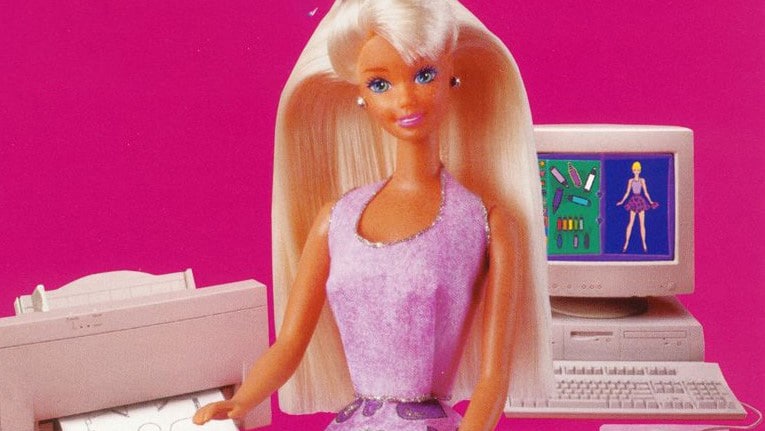Following the induction of Barbie Fashion Designer into the World Video Game Hall of Fame, a major retrospective from Nicole Carpenter of Polygon has dived deep into its creation, and its legacy as a game designed solely ‘for girls’ in an era where this was uncommon.
Per reporting from Carpenter, Barbie Fashion Designer was a massive hit for Mattel when it launched in 1996, outselling popular games like Quake on its way to 1 million copies sold in its first two years on the market.
The game was unique for its hybrid nature; it was a digital dress-up video game where players could also print off designs, and then create real-world clothing using these templates and included fabrics.
It not only encouraged computer literacy for young girls, it also engaged their interests in dolls, and taught transferrable skills, including sewing. As Polygon describes, this lean into ‘feminine’ hobbies did spark some outrage at the time of its release, with some critics claiming it perpetuated traditional femininity in a way that was harmful and reductive.
Others acknowledged that Barbie Fashion Designer was a product that enabled girls to explore their interests in practical and exciting new ways. Previously, video games had largely been thought of as a hobby ‘for boys’ but Barbie Fashion Designer went some ways towards changing this perspective.
‘The legacy of Barbie Fashion Designer may be complicated, tied up in stereotypes and a challenging development cycle, but nowadays, it’s finally being consistently recognised as a formative experience for a generation of kids,’ Carpenter writes.
Read: What happened to ‘Girl Gamer’? Searching for Nintendo’s forgotten pre-teen girl magazine
Speaking to multiple developers who worked on the game, Carpenter reveals the massive push behind Barbie Fashion Designer, which was reportedly disregarded by Barbie owner Mattel, at first. Game producer Jesyca Durchin claims Mattel wasn’t ‘really keen’ to work on the game, with these feelings stemming from doubt over the project, and the failure of the Mattel Intellivision console in the late 1970s.
‘We would set up meetings with Barbie brand people and they wouldn’t even come,’ Lauren Berzins Kelly, product manager of Barbie Fashion Designer told Polygon. ‘These were our co-workers in the same building.’
Eventually, Mattel brought James Cameron’s Digital Domain on board to help with development, and to cut its costs. The team saw the market potential in the project, and went hands-on to push it out. While this process was littered with technical challenges, due to the complexity of the game’s printer functionality and novelty in the market, the end result certainly paid off.
Barbie Fashion Designer was a major success for Mattel and Digital Domain, and wound up having an impressive impact on the global video games market. While its legacy has only recently been appreciated, it’s great to see it finally acknowledged as a catalyst for changing the modern games industry.
The entire Polygon retrospective of Barbie Fashion Designer is an essential read.





